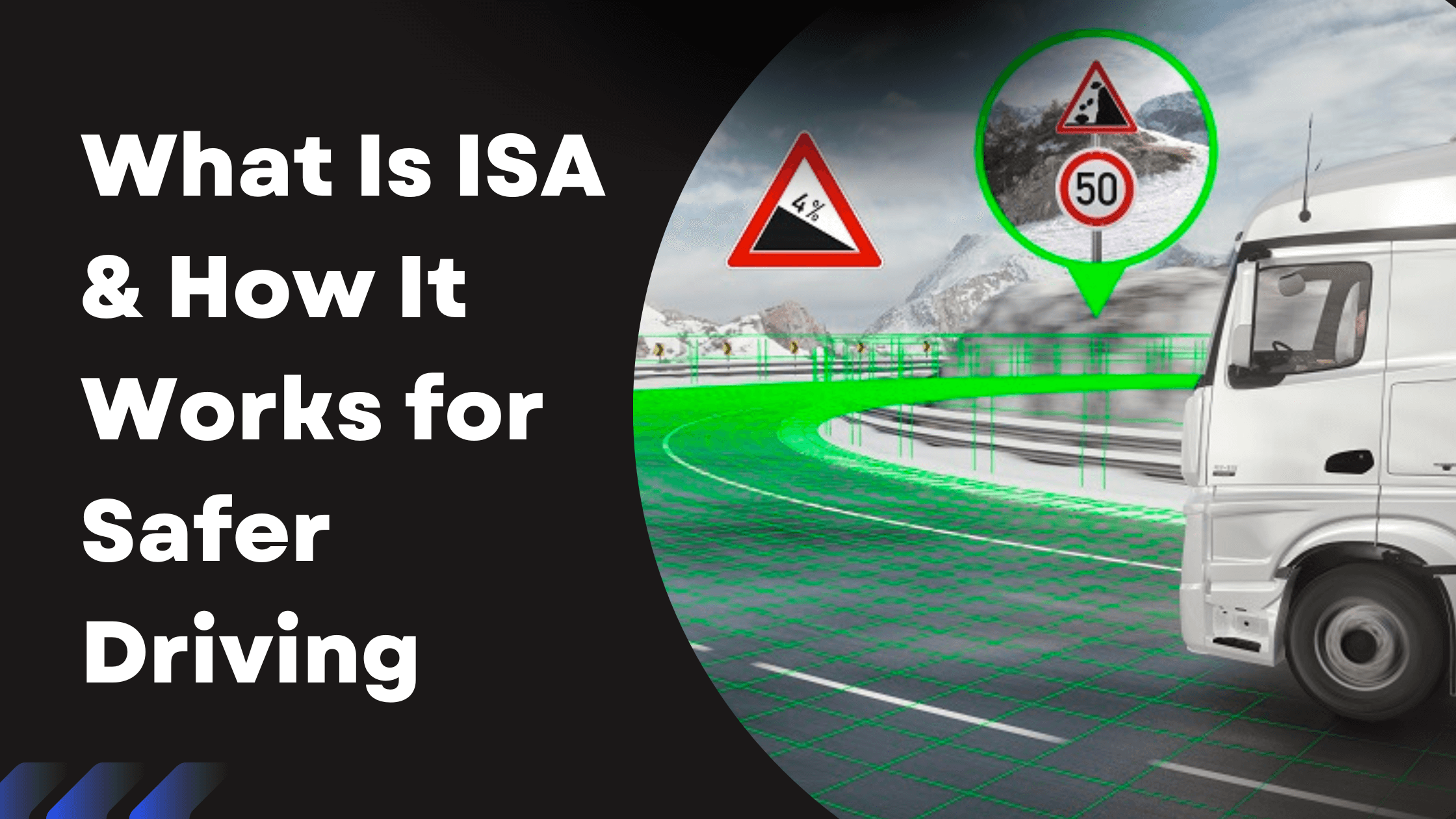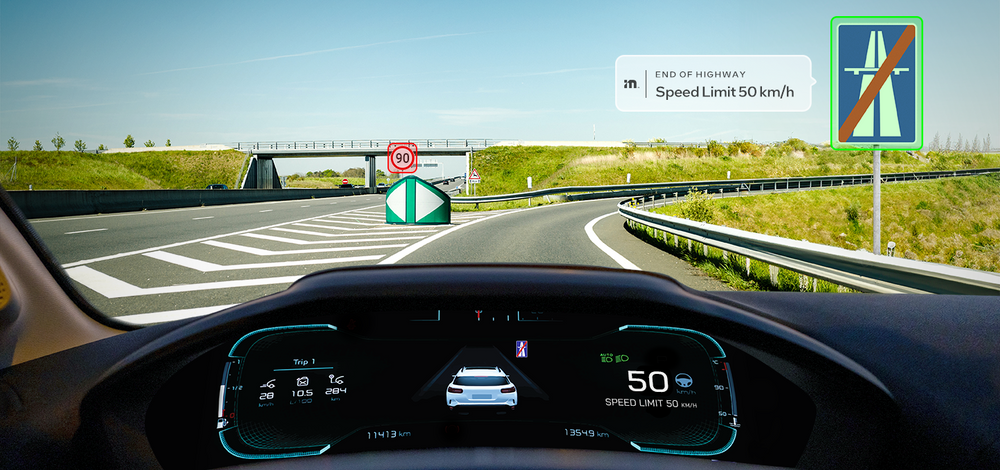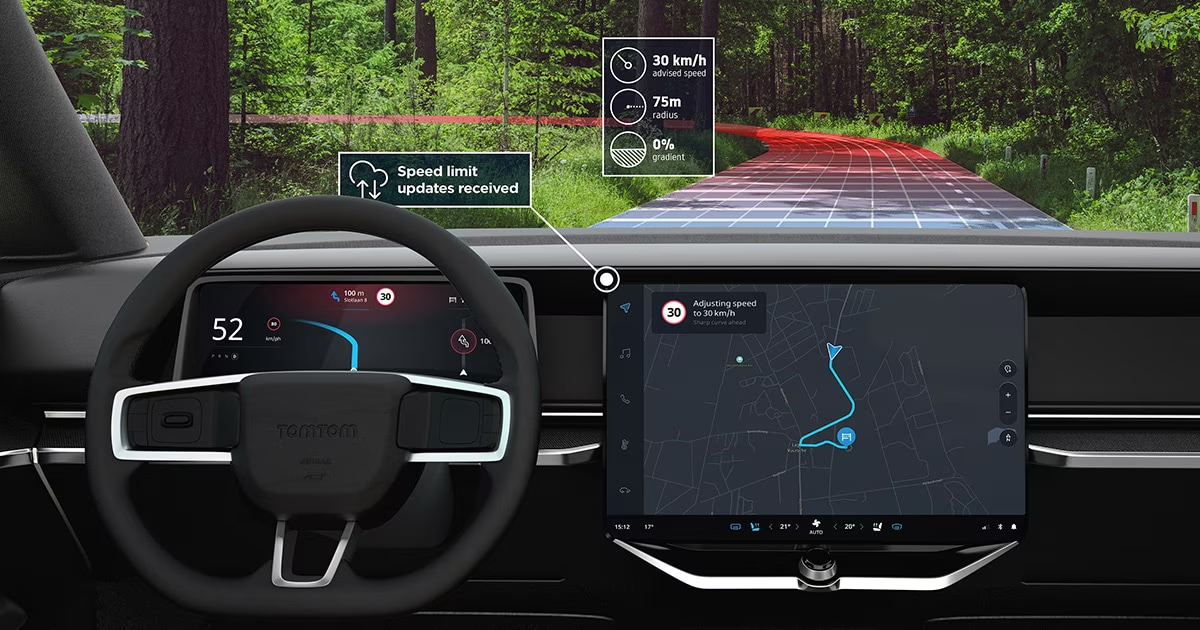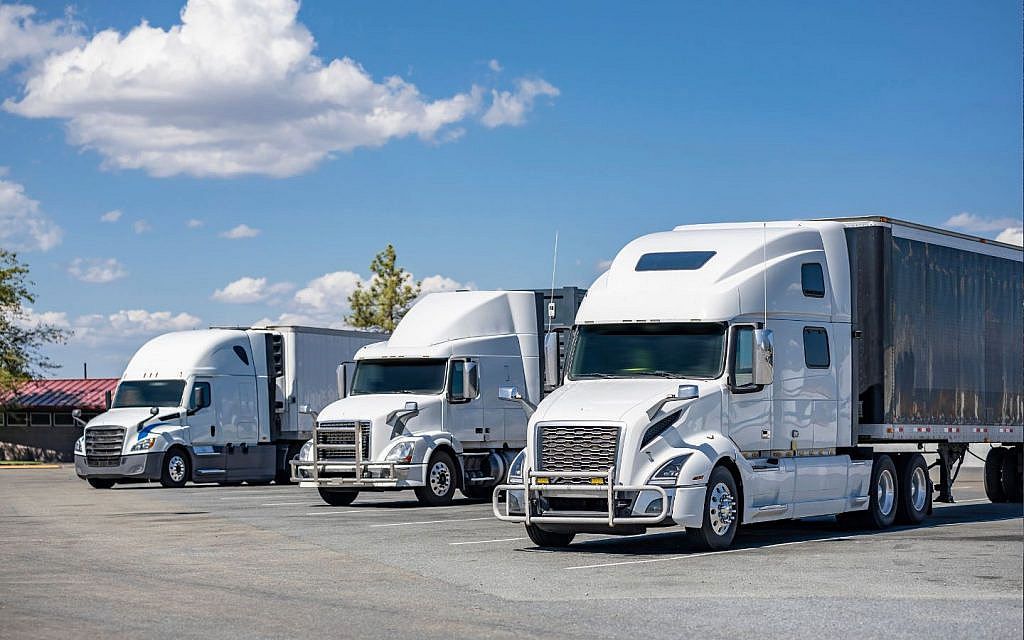Picture your car stepping in before your foot goes too far—no guesswork, no sudden slamming on the brakes. That’s where Intelligent Speed Assistance, or ISA, comes into play.
What is Intelligent Speed Assistance (ISA) and how does it work?
Jun 5, 2025 Resolute Dynamics

Speeding has long played a leading role in traffic accidents. It cuts down how quickly a driver can respond and amplifies the damage when things go wrong. Everyone nearby ends up part of the gamble.
Let’s break down what ISA actually does, how it functions behind the scenes, and why more vehicles are rolling out with this feature built in.
✅Key Takeaway:
In 2025, Intelligent Speed Assistance (ISA) is reshaping road safety by pairing GPS, cameras, and live data to help drivers stick to speed limits without guesswork. It’s not just a buzzer—it adjusts or holds speed to prevent violations and cut accident risks. With the EU leading the charge and other regions following suit, ISA is fast becoming a fleet essential—saving fuel, dodging penalties, and guarding both people and reputations on the road.
Why Speed Control Matters in Smart Mobility

Speeding claims thousands of lives each year. In urban areas, it makes it harder to stop in time for someone crossing the street. On highways, it turns a bad crash into a fatal one.
ISA belongs to the broader category of Advanced Driver Assistance Systems (ADAS). These features are built to reduce human error. What sets ISA apart is its direct focus on keeping speed in check—not just alerting you, but actively helping you stay within limits.
What is Intelligent Speed Assistance (ISA)?
Intelligent Speed Assistance (ISA) goes beyond basic speed alerts. It’s a smarter ADAS feature that taps into real-time data, onboard cameras, and GPS to figure out the speed limit where you’re driving. Then it either warns you or helps cap the speed so you don’t break it without realizing.
This isn’t just a noisy alert system. ISA acts more like a digital driving partner—one that watches road signs, checks your speed, and steps in when you miss something. It’s built to keep your foot—and your focus—in the right zone.
✅ How It Works at a Glance:
ISA uses a fusion of three main technologies:
-
Speed Sign Recognition Cameras: These are front-facing cameras that visually detect traffic signs, especially speed limits.
-
Global Positioning System (GPS) + Map Data: ISA cross-references the vehicle’s location with speed limit databases embedded in digital maps.
-
Vehicle Speed Monitoring: The system compares the detected or mapped speed limit with the car’s actual speed using wheel speed sensors and the vehicle’s ECU (Electronic Control Unit).
If you’re over the limit, the ISA may:
-
Alert you with visual or audible warnings (soft intervention),
-
Push back gently against the accelerator (haptic feedback),
-
Or reduce engine power to bring you within the legal limit (active intervention).
Why It’s Called “Intelligent”
The system is “intelligent” because it doesn’t just detect and react—it interprets context. For example:
-
It knows when a temporary speed limit is in place due to construction.
-
It distinguishes between normal highway signs and variable electronic signs.
-
In some models, it learns driver behavior over time to reduce false alerts.
ISA also adapts across regions. For example, in Europe, it prioritizes metric speed signs, while in the UAE or India, ISA systems are tuned for local signage and multilingual cues.
Regulatory Momentum
ISA vs. Traditional Speed Limiter
It’s important to distinguish ISA from passive speed limiters or cruise control:
| Feature | Intelligent Speed Assistance | Cruise Control / Speed Limiter |
|---|---|---|
| Dynamic adjustment | ✅ Yes | ❌ No |
| Real-time road awareness | ✅ Yes | ❌ No |
| Responds to traffic signs | ✅ Yes | ❌ No |
| Autonomous speed correction | ✅ Optional | ❌ No |
ISA makes decisions based on external road context, while traditional limiters rely solely on preset speeds.
ISA as a Part of Broader ADAS Ecosystems
ISA doesn’t work in isolation. It’s often integrated with:
-
Lane Keeping Assist
-
Adaptive Cruise Control
-
Emergency Braking Systems
-
Connected Vehicle Platforms
In systems like Resolute Dynamics’ “Capture – Connect – Control” model, ISA forms part of the “Control” pillar. It not only prevents speed-related incidents but enhances fleet-wide compliance and efficiency.
Why It Matters
How Does Intelligent Speed Assistance (ISA) Work?

Let’s break down each part of the system and how they work together.
Road Sign Recognition (RSR)
The first line of defense in ISA is a forward-facing camera, usually mounted near the rearview mirror. This camera is designed to scan the road ahead in real time. It’s trained using computer vision and image recognition algorithms to detect and interpret:
-
Speed limit signs
-
Temporary signs (like construction zone limits)
-
Digital or LED traffic signs
-
Additional cues like “school zone” warnings or weather-related changes
The camera interprets symbols, numbers, and context, just like a human driver. It can distinguish between speed limit signs and other signs using AI models trained on massive datasets of real-world road environments.
GPS & Digital Map Integration
While road signs give immediate information, GPS and digital maps provide a broader picture. The ISA system constantly checks the vehicle’s geolocation and compares it to a rich, regularly updated map database that includes:
-
Local speed limits (urban, rural, highways)
-
School zones and seasonal limits
-
Country-specific regulatory differences
-
Areas with dynamic or variable limits
Some systems also pull in real-time traffic data from the cloud to adjust based on current driving conditions.
This redundant design — combining visual recognition with GPS/map data — ensures that even if a sign is missing, damaged, or blocked, the vehicle still “knows” the correct speed.
Speed Comparison Logic
Once ISA has the current speed limit (from either the sign or GPS map), it continuously compares it to the vehicle’s actual speed using data from the speedometer, wheel speed sensors, and engine control unit (ECU).
If the vehicle is driving faster than allowed, the system calculates:
-
How much over the limit the vehicle is
-
How long the vehicle has been over the limit
-
Whether it’s safe to intervene or just warn the driver
This decision-making process is governed by a logic algorithm, often based on ISO 15622 (Adaptive Cruise Control protocols) and regional road safety standards.
Driver Alerts or Assistance
If a speed violation is detected, the ISA responds. How it responds depends on the system type:
-
Advisory Mode: Gives the driver a visual or audio warning — for example, a flashing icon or an alert chime.
-
Haptic Feedback: Some systems gently resist if the driver pushes the accelerator too far, giving a “pushback” or pedal resistance.
-
Combo Alerts: Many systems use multiple types of alerts for higher effectiveness, especially in urban zones or near school areas.
These notifications are designed to be non-intrusive but noticeable, encouraging voluntary compliance.
The Technology Behind the Scenes
ISA systems rely on edge computing — meaning they process data locally within the vehicle. This ensures split-second decisions without needing cloud access. However, updates to maps, regulations, and AI models are regularly synced when the car connects to the internet via telematics.
The intelligence of the system improves over time using:
-
Machine Learning: To better recognize signs, even in poor visibility.
-
Sensor Fusion: Combining radar, lidar, GPS, and camera data.
-
Real-Time Telematics: To send and receive fleet-wide updates or event alerts.
Why This Matters
The ISA system doesn’t just stop you from speeding — it understands where you are, what the legal expectations are, and how best to guide or control your driving. This makes it not only a smart tool but an essential safety companion for modern mobility, especially as we transition into autonomous and connected vehicle ecosystems.
Types of ISA Systems
Not all ISA systems are the same. There are three main types:
-
Advisory ISA: Just gives a warning when you’re speeding. You stay in full control.
-
Supportive ISA: Helps you slow down but lets you override it by pressing harder on the gas.
-
Mandatory ISA: Actively limits your speed and doesn’t allow override, except in emergencies.
Most cars today come with the first two types. Fleet vehicles or public buses may use stricter versions.
Benefits of Intelligent Speed Assistance
ISA isn’t just about rules. It actually improves the entire driving experience:
-
Fewer accidents: Keeps drivers from speeding in high-risk zones like schools or construction areas.
-
Better fuel economy: Driving at steady speeds uses less fuel.
-
Lower emissions: Less speeding means less harsh braking and acceleration.
-
Insurance benefits: Safer driving records can reduce insurance costs.
-
Peace of mind: ISA reduces stress and helps drivers focus on the road.
For city planners and transport authorities, ISA also helps enforce speed limits without needing physical speed bumps or more speed cameras.
ISA in Fleet Management: A Game Changer

Fleet operators love ISA. Managing dozens or hundreds of vehicles means you need systems that ensure compliance without needing to babysit drivers.
ISA connects well with fleet telematics platforms, like those developed by Resolute Dynamics. With real-time alerts, driver behavior tracking, and data-driven decisions, companies can:
-
Reduce accident claims
-
Monitor compliance with regulations
-
Improve public safety
-
Boost brand reputation
In places like the UAE, where speed enforcement is strict, ISA helps logistics, taxi, and delivery fleets avoid fines and keep drivers safe.
ISA and Global Regulations
ISA isn’t a luxury anymore. It’s becoming law. The EU regulation (GSR2) requires ISA in all new cars from 2022 onward. Other countries like Japan, India, and Australia are studying similar moves.
The United Nations Economic Commission for Europe (UNECE) has also started discussions on global standards for ISA systems, making it a global trend.
Manufacturers who want to sell cars globally need to meet these safety benchmarks, and ISA is at the center of it all.
How ISA Aligns with the “Capture – Connect – Control” Model
Companies like Resolute Dynamics are already working on this future. Their model — Capture, Connect, Control — fits ISA perfectly:
-
Capture: Onboard cameras detect speed limits and surroundings.
-
Connect: Real-time telematics sends data to cloud systems and fleet dashboards.
-
Control: AI systems apply that data to help vehicles stay within speed limits.
This closed-loop system ensures safety at every step, from seeing the sign to taking action.
Challenges and Limitations of ISA
Of course, ISA isn’t perfect. Some issues still exist:
-
Sign confusion: If a sign is dirty or blocked, the camera may miss it.
-
Map errors: Outdated or incorrect maps can give wrong speed data.
-
Driver resistance: Some drivers don’t like the idea of being “controlled.”
-
Weather conditions: Heavy rain or fog can reduce camera visibility.
But with better AI, regular updates, and driver training, these problems are becoming less common.
The Future of ISA and Smart Vehicle Safety
ISA is just the beginning. Future systems will use adaptive algorithms that learn from traffic flow, weather, and even driver habits.
Imagine a car that knows when a school zone is active or when fog is reducing visibility, and adjusts its behavior in real time. That’s where predictive analytics and vehicle-to-infrastructure (V2I) communication will take us.
Conclusion
And with companies like Resolute Dynamics leading the way in smart vehicle technology, we’re moving toward a future where every journey is safer — and every road is smarter.